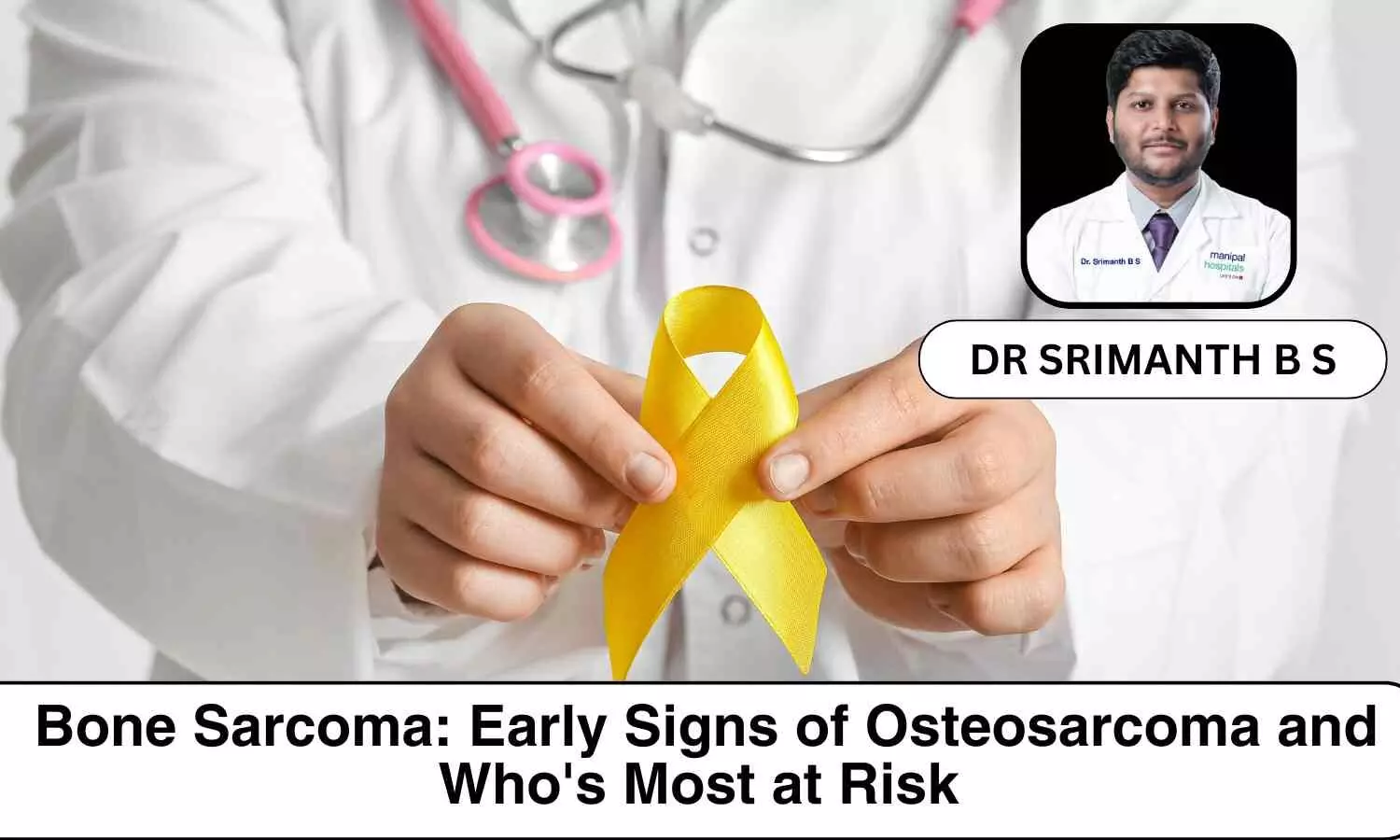Bone Sarcoma: Early Signs of Osteosarcoma and Who's Most at Risk - Dr Srimanth B S

Bone sarcomas are cancers originating from the skeletal system. It is hypothesized that DNA damage leads to cancerous cell growth. The causes of this serious disease remain unidentified, though exposure to radiation and untreated benign bone tumours are suspected risk factors for malignant transformation.
These cancers predominantly affect individuals aged 10 to 30 years, with no known exposure-related risk factors in this age group. It can also occur in older adults, but this is less common. Chondrosarcoma, another type of sarcoma, typically occurs in individuals aged 30 to 70 years.
The impact on children and young adults can be profound if the disease is not detected early. Healthcare providers at tertiary centres play a crucial role in identifying sarcomas and referring patients to quaternary care centres specializing in cancer treatment.
Treatment is managed by a multidisciplinary team of cancer care specialists who tailor a personalized treatment plan. Treatment for bone sarcoma may involve a combination of therapies including chemotherapy, surgery, and radiation therapy.
What are the early signs to watch out for?
The first stages of osteosarcoma may have insignificant symptoms, so one must carry out bone cancer tests right away. Initial symptoms may include localized pain at the site of disease, which might progress to constant bone pain, worse at night and with exercise.
Swelling or a mass at the tumour site (which might not be seen until the size of growing) The presence of these tumours near a joint can limit range-of-motion as well if not properly treated. Bones that can fracture easily with minimal trauma may also be suggestive for osteosarcoma because the cancer weakens bone.
What are the treatment modalities?
Bone sarcoma are the most common type of bone sarcoma and require aggressive treatment. Typically, high-grade, treatment begins with chemotherapy, which plays a pivotal role by targeting cancer cells systemically to prevent spread and shrink the tumour.
Following initial treatment, a team of experts assesses the response and plans for surgical intervention, often aiming for limb-sparing surgery (performed in over 95% of cases at our centre) or, in rare instances, amputation.
Limb-sparing surgery, a complex procedure crucial for treating bone cancers, involves safe removal of the sarcoma and reconstructing the defect using various techniques to restore a functional limb. Planning during the chemotherapy phase is essential to develop a comprehensive strategy.
Reconstruction methods include the use of tumour megaprosthesis made from durable materials such as stainless steel or titanium, long-lasting metal implants, recycled bone from bone banks, or occasionally a composite of metal and bone. Post-surgery, prescribed cycles of chemotherapy complete the treatment regimen.
Some low-grade osteosarcomas may be treated with surgery alone, especially in middle-aged or older patients where chemotherapy might not be an option.
The issue of limb-sparing surgery is a challenge at various ages. The principles guide the execution, albeit growing children need management strategies that take into account long-term growth and preservation of function. In its short-term approach, custom-made expandable implants are surgically inserted into the body, where they grow as well to keep pace with growing tissue.
In addition, a protocol for lengthening procedures when possible is in place to minimize limb length discrepancies following bone tumours treatments over time. Advances in technology, like patient custom instrumentation (PCI), 3D-printed implants and navigation devices have significantly raised the bar of safety and efficacy regarding resection limb preservation for soft tissue sarcomas near joints.
To sum up, bone sarcomas remain challenging, but the optimal outcomes will be at a specialized cancer centre. We can not only save lives in every age group, but ultimately we may preserve limbs and the quality of life.


